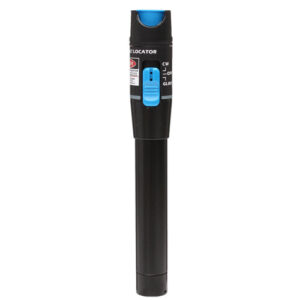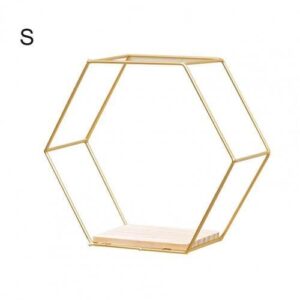The Origins of Clean Beauty: A Historical Perspective
The origins of clean beauty can be traced back to the early 20th century when concerns about the safety of cosmetic ingredients began to emerge. The movement gained momentum in the 21st century as consumers sought more natural and sustainable alternatives in their beauty products. One of the key aspects of clean beauty is the focus on using non-toxic and ethically sourced ingredients in cosmetics.
In recent years, the trend of clean beauty has also extended to makeup products, including the popular contouring makeup products. These products are designed to enhance the natural structure of the face, providing a sculpted and defined look. With the rise of clean beauty, there has been a growing demand for contouring makeup products that are free from harmful chemicals and synthetic additives.
Brands like Inglot Cosmetics have responded to this demand by offering a range of contouring makeup products that prioritize natural and clean ingredients. As the clean beauty movement continues to reshape the makeup industry, consumers can expect to see more innovative and sustainable options for their cosmetic needs.
The Origins of Clean Beauty: A Historical Perspective
As the clean beauty movement continues to gain momentum, it’s essential to understand its origins and historical perspective. Clean beauty is not a new phenomenon, but rather a resurgence of traditional beauty practices that prioritize natural, non-toxic ingredients. The roots of clean beauty can be traced back to ancient civilizations such as Egypt, where ingredients like olive oil, honey, and minerals were used to create cosmetics. Similarly, in India and China, natural herbs and plant-based ingredients have been integral to beauty rituals for centuries.
Fast forward to the 20th century, clean beauty took a backseat as synthetic and chemical-based ingredients became prevalent in cosmetic formulations. However, concerns about the potential health risks associated with these ingredients led to a renewed interest in clean beauty in the early 2000s. This shift in consumer awareness and demand for transparency prompted beauty brands to reformulate their products to exclude harmful substances.
Today, the clean beauty movement encompasses not only the use of natural and organic ingredients but also sustainability, ethical sourcing, and cruelty-free practices. Consumers are increasingly mindful of the impact of their beauty choices on the environment and their well-being. As a result, the demand for clean beauty products continues to grow, prompting innovation and diversity in the beauty industry.
In conclusion, the rise of clean beauty is a nod to ancient traditions and a response to contemporary concerns, reflecting a holistic approach to beauty that resonates with the values of modern consumers.
The Science Behind Clean Beauty: Debunking Myths and Understanding Ingredients
As the clean beauty movement continues to gain momentum, it’s important to understand the science behind clean beauty products to separate fact from fiction. The growing interest in clean beauty is fueled by a desire for transparency and safety in cosmetics, leading consumers to scrutinize product labels and seek out natural and non-toxic ingredients. However, there are several myths and misconceptions surrounding clean beauty that need to be debunked to truly understand its principles.
One of the common myths is that natural ingredients are always safe, while synthetic ingredients are always harmful. In reality, both natural and synthetic ingredients can be formulated to be safe and effective. The safety of an ingredient depends on various factors such as its source, concentration, and how it’s used in a formula. Additionally, the term “clean” itself lacks a standardized definition, leading to confusion among consumers. Some brands may promote their products as clean while still using certain synthetic ingredients, further blurring the lines.
To navigate through this complex landscape, it’s crucial to understand ingredients and their scientific properties. For instance, common clean beauty ingredients like hyaluronic acid, vitamin C, and niacinamide have extensive scientific backing for their skincare benefits. These ingredients can be produced synthetically to ensure purity and efficacy, debunking the myth that only naturally derived ingredients are desirable.
Furthermore, consumers should be wary of fear-based marketing tactics that demonize certain ingredients without scientific evidence. The safety of an ingredient is assessed through rigorous testing and regulatory oversight, ensuring that products on the market are generally safe for use. It’s essential to rely on credible sources and scientific studies to make informed decisions about clean beauty products.
In conclusion, debunking myths and understanding the science behind clean beauty is vital for consumers and industry professionals alike. By promoting transparency, education, and evidence-based skincare, the clean beauty movement can continue to thrive while prioritizing safety and efficacy.
Clean Beauty: Embracing Sustainability and Ethical Practices
As the beauty industry shifts towards more sustainable and ethical practices, the rise of clean beauty has taken center stage. Consumers are becoming increasingly conscious of the ingredients in their makeup and the environmental impact of their beauty routines. Clean beauty emphasizes the use of natural and non-toxic ingredients, as well as sustainable packaging and ethical production methods.
One of the key aspects of the clean beauty movement is the emphasis on sustainability. This includes sourcing ingredients ethically, minimizing carbon footprint during production, and utilizing eco-friendly packaging. Many clean beauty brands are also committed to reducing waste and promoting recycling initiatives. By embracing sustainable practices, clean beauty not only benefits the environment but also resonates with consumers who prioritize eco-conscious products.
Furthermore, ethical practices are at the core of clean beauty. This involves ensuring fair labor practices, supporting local communities, and avoiding animal testing. Clean beauty advocates for transparency in the sourcing and production of ingredients, providing consumers with the assurance that their products are not only safe for personal use but also ethical in their creation.
In essence, clean beauty is not just a trend, but a movement towards a more responsible and thoughtful approach to cosmetics. By embracing sustainability and ethical practices, clean beauty sets a new standard for the industry, prompting both established brands and newcomers to reevaluate their methods and prioritize the well-being of both the consumers and the planet.
Clean Beauty in the Mainstream: Impact, Trends, and the Future
The rise of clean beauty in the mainstream cosmetics industry has had a significant impact on consumer preferences and purchasing trends. With a growing awareness of the potential harmful effects of certain chemicals and ingredients in traditional makeup products, more and more consumers are seeking out cleaner, safer alternatives. This shift has propelled clean beauty into the spotlight, leading to an increase in demand for products that are formulated without potentially toxic or irritating ingredients.
As a result, the clean beauty movement has sparked a wave of innovation within the cosmetics industry. Brands have been quick to respond to the demand for clean beauty products, leading to the development of new formulations and technologies that prioritize safety and transparency. This has given rise to a variety of trends within the clean beauty space, including the use of natural and organic ingredients, sustainable packaging, and cruelty-free practices.
Looking ahead, the future of clean beauty appears bright, with a continued emphasis on sustainability, inclusivity, and scientific advancements. Industry experts predict that clean beauty will become even more mainstream, with greater accessibility and affordability for consumers. Additionally, developments in clean beauty regulations and standards will likely further drive the movement towards safer, more ethical beauty products.
In conclusion, the mainstream embrace of clean beauty is not just a passing trend, but a fundamental shift towards a more conscientious and health-conscious approach to cosmetics. As consumers continue to prioritize clean, safe, and transparent beauty products, the industry will undoubtedly evolve to meet these demands, shaping the future of makeup and cosmetics.




















